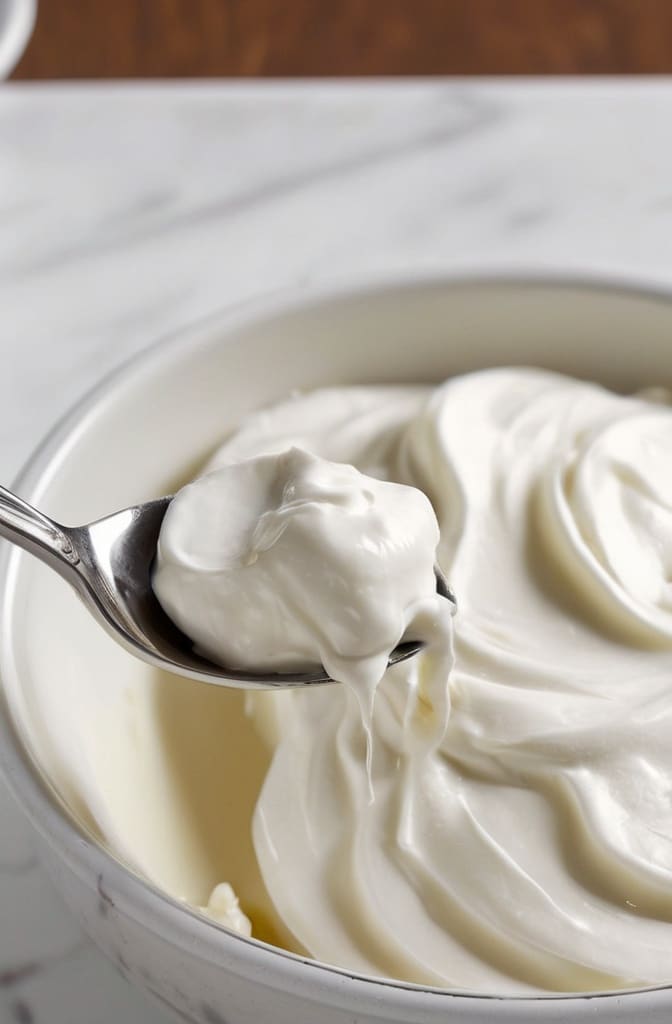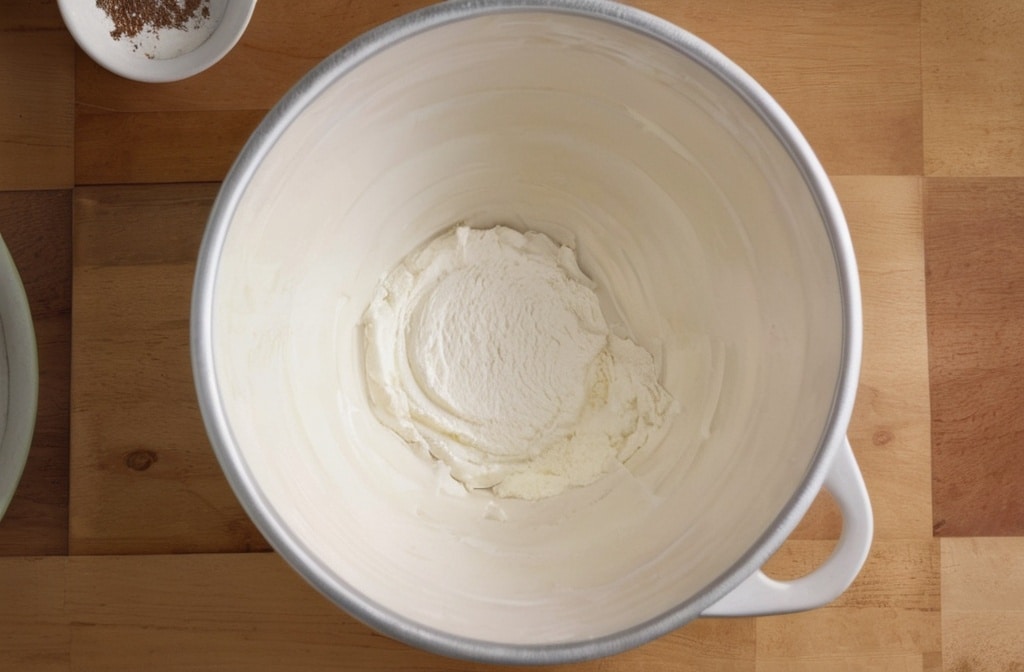Ever had a cheesecake explode in the oven like a dairy volcano? I have. It was 2011, my first gig as pastry sous chef, and the cream cheese filling was overmixed, under-tempered, and angry. Lesson learned: cream cheese filling is delicate sorcery. When is it right, though? Oh lord, it’s velvety, smooth, rich—but not cloying—and it holds its shape like a dream. Whether you’re swirling it into brownies, stuffing cupcakes, or layering it between cinnamon rolls, this stuff makes the bake.
The cream cheese filling recipe isn’t just some whipped-up fluff. It’s a backbone. A utility player who moonlights in glamour roles. Sweet or savoury, dense or airy—it adapts. Master it, and suddenly your baked goods have depth. A little tang. A smooth hum beneath all that sugar. It’s like salt in caramel. Invisible, but crucial.
The cream cheese filling recipe calls for balance. Get too eager and whip it till it weeps. Or ignore it, and you’ve got lumps the size of grapes. I’m gonna walk you through the proper way to make it—the pro way. We’re talking about restaurant-quality smoothness and flavour, without the stress or the guesswork.
Ingredients & Substitutions
Cream cheese filling recipe starts with—big surprise—cream cheese. But not just any cream cheese. Use full-fat blocks, not the whipped stuff or spreads in tubs. They’ve got stabilizers that throw off texture. You want rich, creamy, pliable.
Cream cheese – 16 oz (2 blocks), softened to room temp. Powdered sugar – 1 to 1½ cups, sifted. Vanilla extract – 1 to 2 tsp, depending on how fragrant you want it. Sour cream – ¼ cup, for extra tang and silkiness. Heavy cream – 2 to 3 tbsp, optional for thinning and smooth blending. Salt – just a whisper, like ⅛ tsp. Wakes up the flavor.
Substitutions: Lactose-intolerant? Try lactose-free cream cheese, but expect a slightly looser texture. No sour cream? Greek yogurt works, just drain it a bit. Need it vegan? Kite Hill’s almond-based cream cheese is decent in a pinch—just beat it minimally.
Pro insight: Go fresh if you can. Aged cream cheese can taste metallic, and sour cream past its prime adds bitterness. Room temp everything—no exceptions. Cold cream cheese equals lumps. You don’t want lumps. Ever.
Step-by-Step Instructions
Cream cheese filling recipe is one of those things that’ll betray you if you rush. You gotta treat it nice. Think of it like making buttercream—slow and steady wins the gloss.
Step 1 – Soften the base. Let your cream cheese sit out at least an hour. Don’t nuke it in the microwave unless you want it to split.
Step 2 – Beat it solo. Use a stand mixer or hand mixer to beat just the cream cheese on medium speed for 1 to 2 minutes. This gets rid of hidden lumps.
Step 3 – Add sugar gradually. Sifted powdered sugar goes in a bit at a time. Don’t dump it all in or it’ll puff up like a sugar bomb. Beat till it’s smooth and a little glossy.
Step 4 – Mix in the flavour. Now’s your moment for vanilla, sour cream, and salt. Go slow. Scrape down the sides and bottom. That sneaky patch under the paddle? That’s where trouble hides.
Step 5 – Adjust consistency. If you want a pipeable filling, stop here. If you need it looser for swirling or layering, add heavy cream a tablespoon at a time. Beat just until blended. Don’t over-whip it—it’ll deflate or get runny.
Common Mistakes: Overbeating. It traps too much air, making the filling soupy or bubbly. Cold cream cheese. Lumps galore, no matter how much you mix. Skipping the sifted sugar. Seems fussy. But the difference in texture? Night and day.
Variations: For lemon lovers, add 2 tsp fresh zest and swap vanilla for lemon extract. For chocolate, fold in 2 tbsp cocoa powder and ½ tsp instant espresso. Trust me. Want spice? A dash of cinnamon and nutmeg turns this into a fall-flavoured bomb.

Cooking Techniques & Science
Cream cheese filling recipe succeeds on one principle: emulsion. That creamy, dreamy texture? It’s fat and liquid molecules holding hands in delicate harmony. Break that bond and boom—grainy, split mess.
Mixing order matters. You beat fat first (cream cheese), then gradually introduce sugar, then moisture. Reverse that, and it’ll curdle. Science, baby.
Why powdered sugar? Because it melts into fat seamlessly. Granulated sugar won’t dissolve all the way unless you cook it, which changes the whole texture.
Why sour cream? It adds body and helps emulsify. The lactic acid gives it tang, cuts the sweetness, and makes the filling feel less greasy on the palate.
What about tools? Stand mixer > hand mixer > whisk. Yes, you can do it by hand if you’re trapped in a cabin with no power. But I wouldn’t recommend it. You want that silky consistency? Let the machine do the work—but not too much.
Temperature science: If you overheat cream cheese (say, in a microwave), the fats can separate. Once that happens, it’s almost impossible to bring it back.
Serving & Pairing Suggestions
Cream cheese filling recipe isn’t just for cakes. It’s a secret weapon. It turns muffins into bakery fare. Banana bread into a showstopper. Pancakes into a five-star brunch.
Stuff it inside cupcakes before baking for surprise centres. Swirl it into brownies or blondies for a marbled effect. Layer it between cinnamon roll dough for extra richness. Pipe it into crepes or between sandwich cookies. Divine.
Pair it with: Lemon, blueberry, raspberry—anything tart or acidic sings next to it. Dark chocolate or espresso for contrast. Carrot cake, red velvet, or spice cake are classics for a reason.
Presentation tip: Use a piping bag for clean lines and pretty swirls. Dust with powdered sugar or garnish with zest, cocoa, or crushed nuts.
Storage note: Store it in the fridge, airtight, for up to 5 days. If it sits, give it a gentle whip before using again. Not too much—just enough to smooth it out.

Conclusion
Cream cheese filling recipe is one of those deceptively simple things that makes or breaks a dessert. Get it right, and suddenly you’re not just baking—you’re creating contrast. Texture. Layers of flavor that sneak up on you.
It’s all about control. Softness without runniness. Tang without sourness. Sweetness balanced like a tightrope act. And that texture? It should feel like butter and silk had a baby.
Be patient. Use the right tools. And for the love of all things holy, don’t skip the room temp step.
Once you’ve mastered it, play. Add booze, herbs, and spices. Go sweet or savoury. You’re not bound by tradition here. Just taste and texture. That’s the chef’s compass.
FAQs
Can I freeze cream cheese filling?
You can—but it’s a gamble. The texture might split when thawed. If you must, freeze in a zip bag, press out air, and thaw in the fridge overnight. Beat gently to revive.
Why is my cream cheese filling runny?
Most likely overmixed or too much liquid. Also, check if your cream cheese was too soft (or microwaved). Always measure your cream and sour cream carefully.
Can I use low-fat cream cheese?
Technically, yes. But it’ll be less rich and more prone to splitting. Full-fat gives better texture and flavour. For lighter versions, add extra powdered sugar to stabilise.
What’s the best use for this filling?
Everywhere. Inside muffins, between cake layers, on toast, or in trifle. It’s especially magical swirled into brownies before baking—marbled bliss.
Is this the same as cheesecake batter?
Nope. Cheesecake has eggs and is baked. This filling is unbaked, smoother, and used more as a component than a finished product. Think of it like frosting’s cooler, tangier cousin.
Want help adapting this recipe to something specific, like stuffed French toast or filled cookies?

Olivia P. is a seasoned food blogger at Tastywink, sharing delicious, easy-to-follow recipes inspired by him passion for home cooking. With years of culinary blogging experience, he brings flavor, creativity, and a personal touch to every dish.
